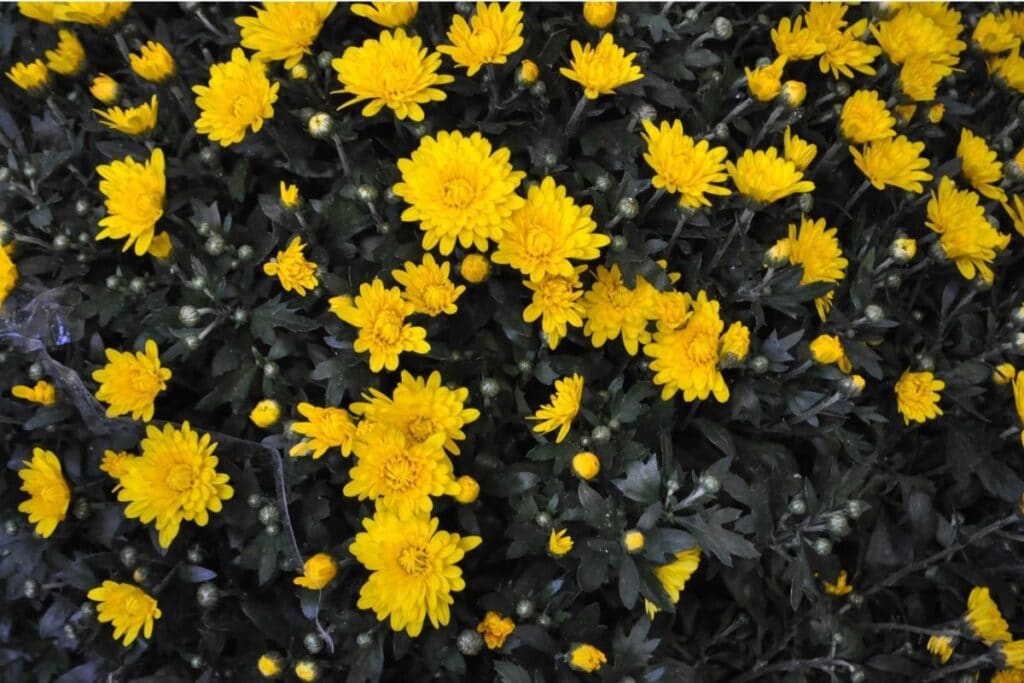Chrysanthemums, also referred to as ‘’mums’’ or chrysanths, are usually the reason why most gardens and fields are filled with the jewel, warm-colored flowers that have different shapes and sizes for a couple of weeks each year during fall.
These hardy perennial plants are great for beginning gardeners as they are relatively easy to plant and maintain.
Continue reading and discover everything you need to know about growing chrysanthemums from how to plant and care for them, to the available different varieties.
Basic Facts about Chrysanthemums
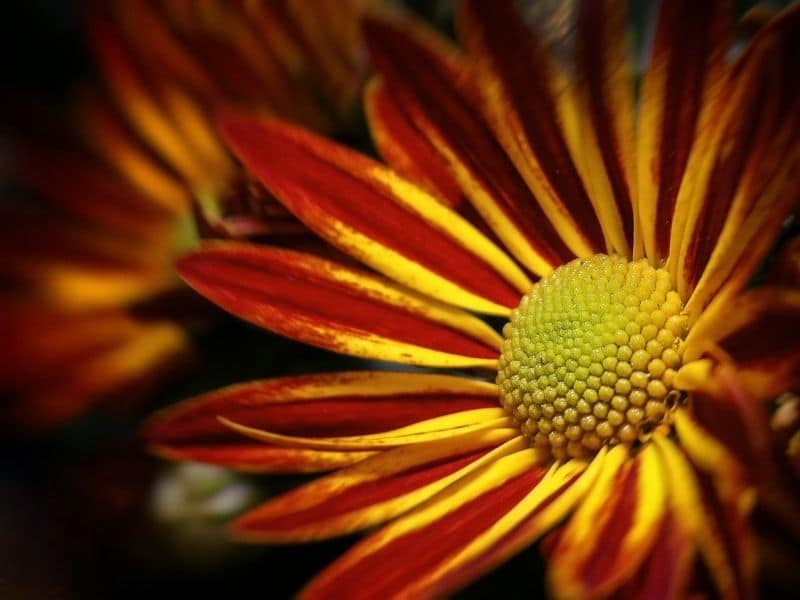
- Most people are unaware that chrysanthemums belong to the Asteraceae, or Compositae, family of plants. As a result, they are relatives of sunflowers, cosmos, dahlias, and marigolds, to name a few.
- Mums are considered tropical flowers. They are native to Eurasian countries, although nowadays, they are grown all over the world.
- This flower is unique-looking because it has hundreds of tiny flowers, called florets, that make up the bigger flower.
- In turn, these florets are made of two different types: disc and ray florets. The disc florets have center buttons, whereas, the ray florets have what people usually call the petals of the plant.
- The plant can be small, big, or giant, and they come in a wide range of colors, such as pink, purple, yellow, lavender, and orange.
- Most of the mums varieties are hardy, thus, they will thrive in zones 3 to 9, according to the USDA.
- The ideal time to order and plant chrysanthemums is in the early spring so they have plenty of time to establish themselves before winter, build deep roots, and become full, powerful plants.
- Flower shapes can also range from reflexed to single to pompom.
History of Mums
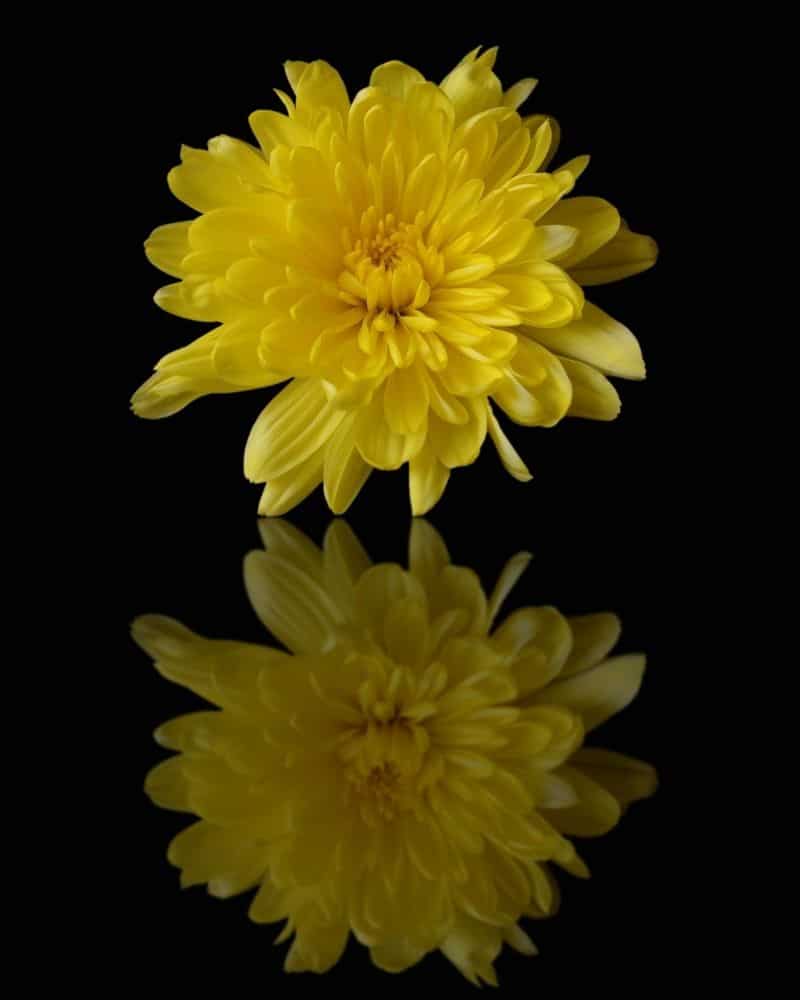
Mums were first cultivated in China, approximately 6 centuries ago. They were later introduced to other countries nearby, such as Japan, by Buddhist monks who were traveling throughout Asia.
This flower became so popular—as it has been associated with the beginning of life since its early cultivation period—that even Japanese Emperors would decorate their thrones with chrysanthemums.
Nowadays, it is normal to see mums in different temples across the world, and even Japanese cities still pay their respect and show their love for this plant during their annual chrysanthemum exhibitions and celebrations.
However, the word chrysanthemum is derived from the Greek words “Chrys” meaning “golden,” and “anthemion” which means “flower.” Ancient Greeks thought this flower would only come in golden tones, hence why they decided to name it as such.
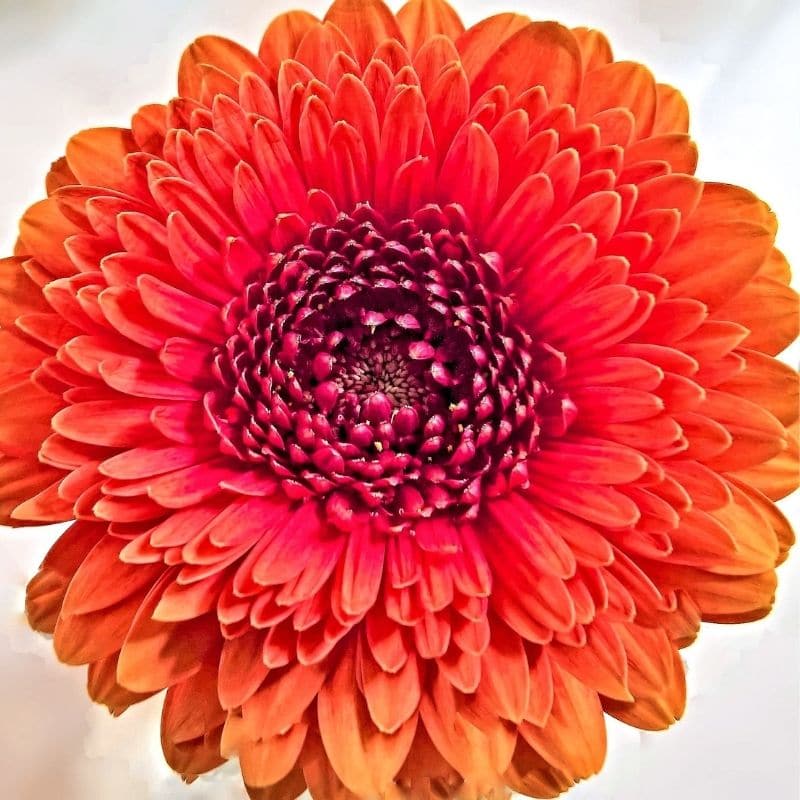
How To Care For Chrysanthemums
Here’s our flower guide about everything you need to know about growing chrysanthemums successfully:
Soil Requirements

Chrysanthemums are not particularly picky about soil type, though a loam is preferential, but they do require a well draining soil nonetheless. Soggy soil can be especially problematic during the winter months when the excess water held in the soil is prone to freezing, which is detrimental to your chrysanthemum plants that have very shallow roots.
When planting chrysanthemums, provide them with well drained soil. The soil has a pH between 6.0 and 7.0. If your soil is heavy or clay-like, consider adding organic matter such as compost, peat moss, or well-rotted manure to improve drainage and aeration. Chrysanthemums grow best in moist soil but not waterlogged.
If you want to grow mums in containers, use a high-quality potting mix that is well-draining and rich in organic matter.
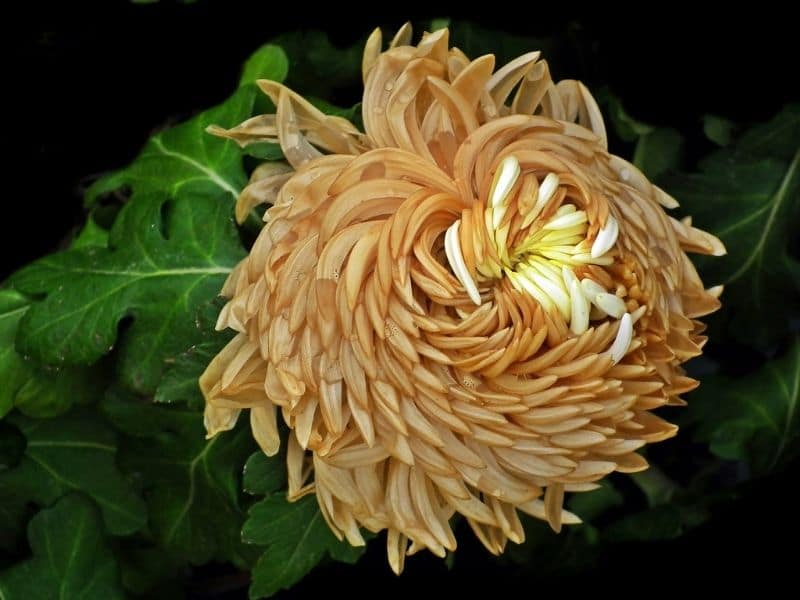
Chrysanthemums require at least six hours of direct sunlight each day to grow and bloom properly. During the spring and summer months, it is important to provide them with full sun exposure.
Keep in mind that these hardy mums prefer bright, indirect light rather than harsh, direct sunlight. If your plants are exposed to intense afternoon sun, consider providing them with some shade during the hottest part of the day.
If you are growing chrysanthemums indoors, place them near a south-facing window or use artificial lighting, such as fluorescent or LED grow lights. Make sure to position the lights close enough to the plants so that they receive adequate brightness.
Water Needs
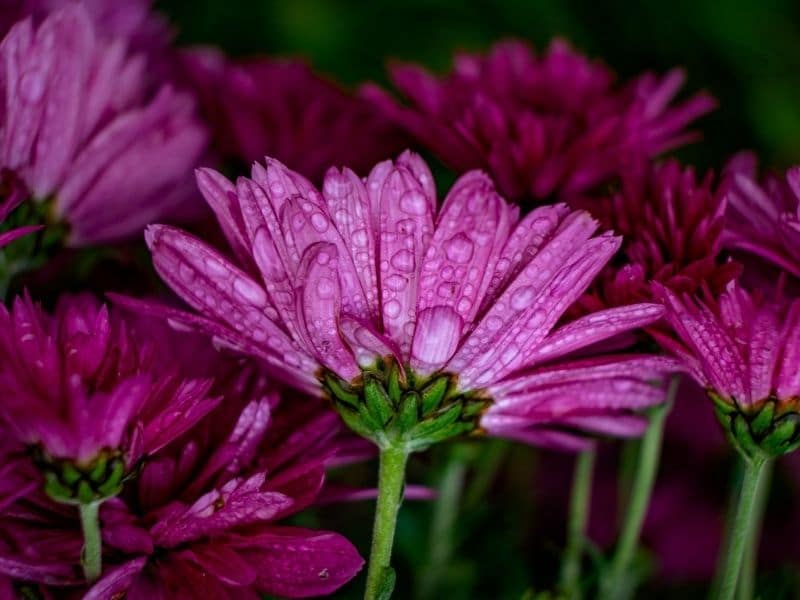
When watering garden mums, you need to make sure that all of the water is going directly to the soil and not to the leaves. If this happens, then the plant’s leaves could get different types of diseases related to fungi.
Fertilizer Requirements
Chrysanthemums are known for being heavy feeders. This means that they like to be fed with fertilizer as often as possible. This could be monthly or bimonthly. It will depend on your soil’s needs. Make sure you do the fertilizer or purchase an organic one.
As soon as the flower buds begin to open, you should stop feeding them.
Pinching Mums

If you are growing mums, then you will be pinching a lot! When you pinch, you are also yielding more bushy plants that will, in turn, bloom more.
Don’t worry, they are not getting hurt by this! It’s called pinching because you get to remove the tips that go upwards and that have shown new growth.
Instead, the plant will naturally start growing side-shoots. It’s called pinching when referring to non-woody plants, such as mums.
If the plant has new shoots, and they are at least 5 inches tall, you need to pinch the ones at the top. Do remember to leave at least 2 or 3 leaves attached to the shoot.
If you do this, you will be helping your plant not only to become healthier but also to produce more blooms. Ideally, you would do this once a month, not more.
As soon as the flower starts to bloom, you need to stop pinching the mums.
Weeds and the Flowers

Chrysanthemums hate weeds. Make sure you remove as many weeds as possible, especially when mums are still growing. Otherwise, those weeds could be competing against your flowers for nutrients that are found in the soil.
Pruning

Mums should be pruned, especially when blooms start to fade away. This will help the plant to bloom for longer periods.
However, mums should not be pruned during early fall, as the existing branches will help mums survive the winter.
Propagating Chrysanthemums
You can propagate Chrysanthemums through division or cuttings. For division, carefully separate a mature clump in early spring, ensuring each division has roots attached.
Alternatively, take stem cuttings from healthy, non-flowering shoots, dip them in rooting hormone, and plant them in a well-draining soil mix, keeping them consistently moist until roots develop.
Pests and Diseases
Aphids love mums! They are the plague most gardeners dread, so if you see them, you will need to add a layer of protection to your plants by either adding fertilizer or special nets so the pests don’t reach them.
Purchasing Mums

Ornamental mums are usually sold in any local garden center. They serve as a decorative plant, therefore, they won’t last for long periods.
On the contrary, they are sold with this characteristic in mind, thus, you won’t be able to plant mums in your fall garden. And even if you do, the flower has lower survival chances.
Does spacing matter when planting mums?
Yes, it does! If sown in springtime, chrysanthemums could be reaching 2 feet in height and weight by fall. If these flowers are planted too close together, they are likely to develop serious issues in their roots’ systems, as they will always fight for nutrients.
Common Types of Mums You Can Grow
According to the United States National Chrysanthemum Society, there is a classification system based on the shape of the flower and there are 13 different types of mums. These are the most common types:
Irregular and Incurve Blooms
These flowers’ inner florets are incurved to their inwards, hence its name. An example of this class would be a ‘’King’s pleasure’’ mum.
Any plant under this classification will grow up to 6 inches in height. However, no two flowers are alike, so all of this category has an irregular appearance.
For a background of different shades of green foliage from evergreen plants, try this one. Because the blooms of this flower can be orange, pink, white, or pink.
Reflex Blooms
When this plant blooms, you will see a slightly flat center that has small florets curved downward. Its petals resemble feathers, and they can be white, pink cream, or yellow.
A good example of this type of plant is the ‘’King George’’ flower, as shown in the image above. They are quite small though, as they will only grow up to 6 inches in height.
Regular Incurve
Although the stem of this plant is short, its blooms can reach up to 8 inches in height. Unlike the irregular incurve variety, this type of plant has a completely perfect round shape.
Its petals hold themselves tight, and its florets seem to be going inwards. The ‘’Heather James’’ is a perfect example of this classification.
Intermediate Incurve
The center bloom of this plant is completely flat and the florets do not touch it, although they do cover it as they go inwards. A variety of this plant can be the ‘’St. Tropez’’ flower.
Single and Semi-double Blooms
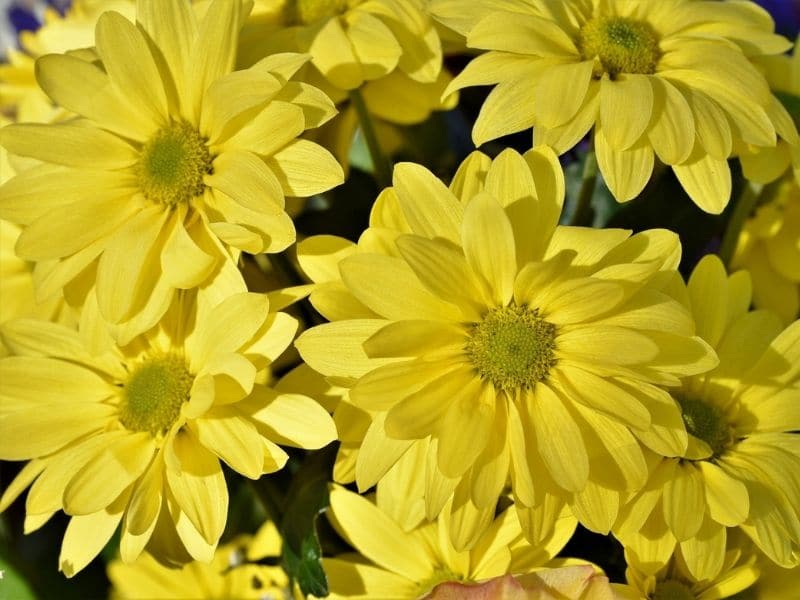
Although they resemble daisies, this chrysanthemum has two ray florets that can either be white, purple, pink, yellow, cream, or orange. They have a compact center where all the florets touch and they can grow up to 3 feet in height.
Thistle
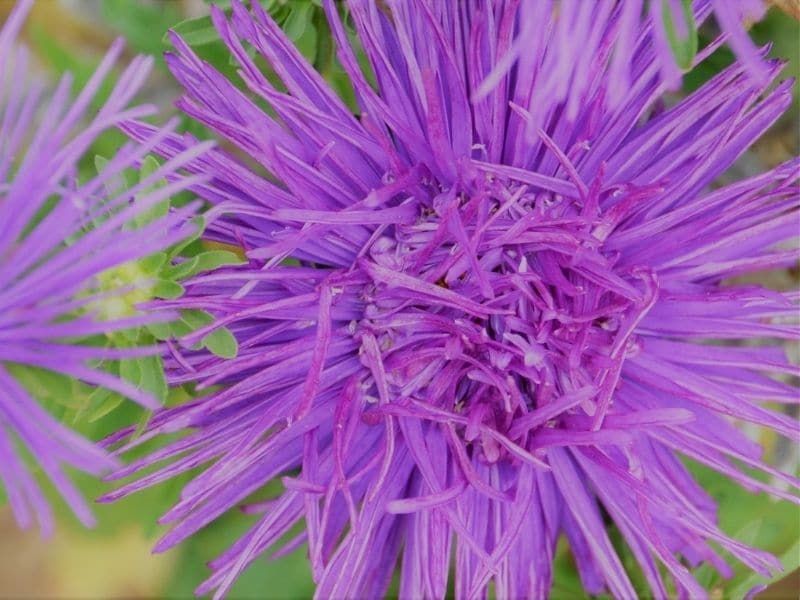
This extravagant mum is very unique, as it has thin florets that are separated from one another. They can have multi-colored blooms, although the most common types are the pink, purple, or creamy white mums.
Quilled Blooms
This chrysanthemum has long florets that have a tubular shape. They often curve themselves downwards, as if they are trying to hold the center of the flower.
Spider Blooms

This mum has spiky florets that resemble a spider’s legs. They can have multiple colors and are very exotic! They will grow up to 6 inches in height.
Anemone
As you can see from the image above, this type of flower has a huge round center and smaller daisy-like petals that go outwards. Its petals can be red, orange, white, yellow, pink, or can also have multiple colors. This particular variety is called “Powder puff.”
Pompons
This variety is one of the smallest ones, as they only grow up to 4 inches in height. They are beautiful ornamental plants and are often used in floral arrangements.
Decorative Blooms
As its name suggests, this type of flower is the most-used in floral arrangements, as they make an exquisite ornamental plant. Its blooms can grow up to 5 inches in width and height, and they have a flat center where all of the florets expand themselves from the center out.
One of the most famous varieties of this classification is the ‘’Honeyglow’’ type of mum.
Unclassified or Extravagant
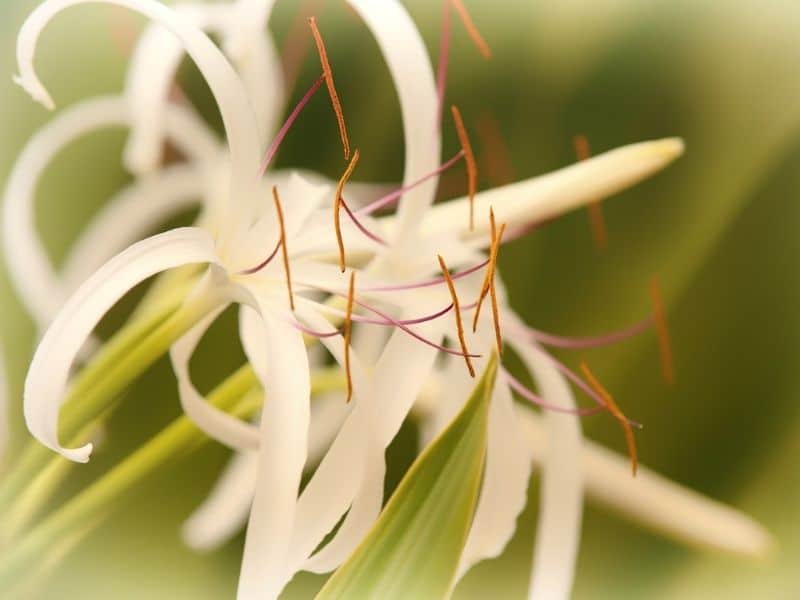
There are hundreds of unclassified chrysanthemums, and they all have very different characteristics that make them unique.
Spoon Mums
Spoon mums have a lovely spoon-shaped petal that tends to go downwards. They are very similar to chrysanthemums and are often placed on that classification. However, spoon mums have a slight curve on the tip of their petals that makes them different.
FAQs
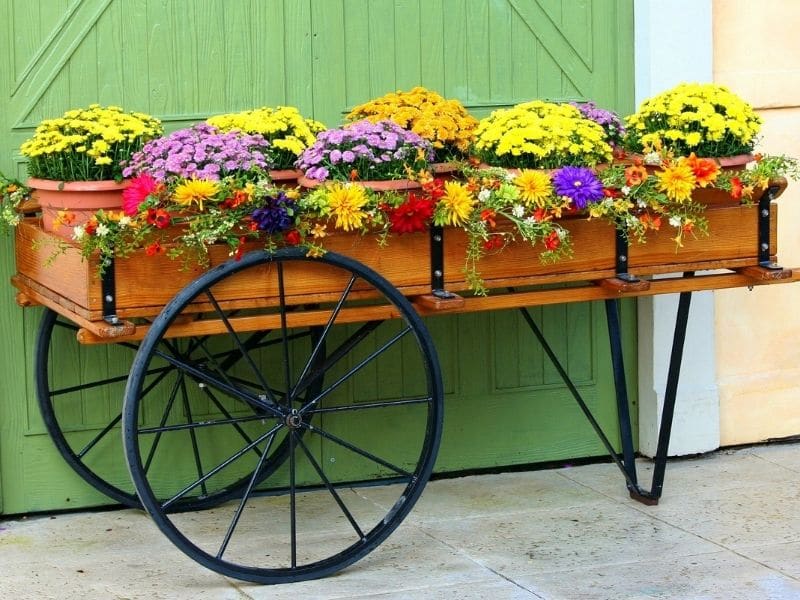
Here are some frequently asked questions regarding this flower:
Are chrysanthemums hard to keep alive?
No, Chrysanthemums are not particularly difficult to keep alive, but they require specific care. Adequate sunlight, well-draining soil, and proper watering are essential for their well-being.
How long do potted chrysanthemums last?
Potted chrysanthemums can last for several weeks to a couple of months, depending on the care provided and the specific variety. The potted mum is often purchased as seasonal or temporary flowering plants.
Are chrysanthemums indoor or outdoor?
Chrysanthemums can be both indoor and outdoor plants. They are often grown as outdoor perennials in garden beds, but the potted mums are commonly used for temporary decorative purposes indoors or on porches.
Can chrysanthemums bloom more than once?
Yes, Chrysanthemums can bloom more than once under the right conditions. If they are pruned or deadheaded after the first bloom, they may produce additional flowers. However, achieving a second bloom may depend on the specific variety, climate, and care practices.
What is the difference between a florist mum and a garden mum?
Florist mums are cultivated for short-term use in floral arrangements, with a focus on uniformity and controlled growth. Most garden mums, on the other hand, are hardy perennials bred for outdoor landscapes, displaying natural growth habits and cold tolerance for long-term planting.
Conclusion
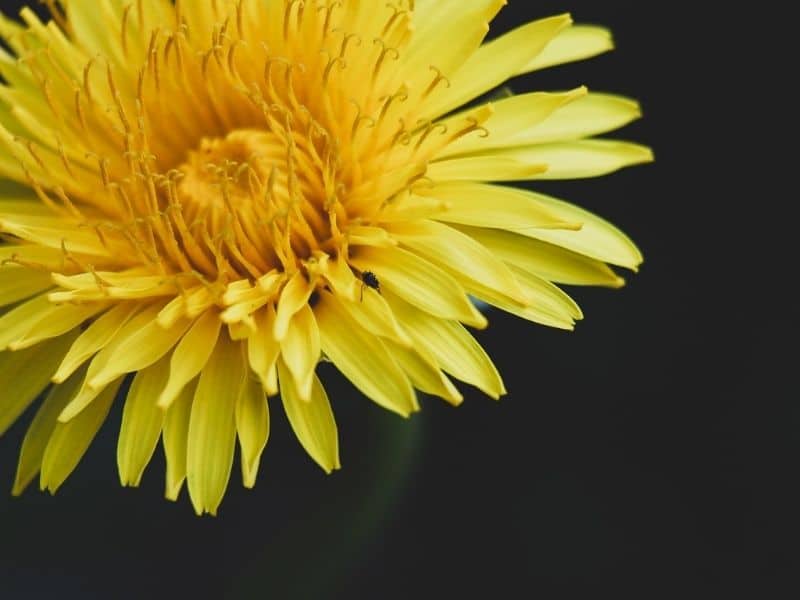
Mums represent abundance, diligence, and health. Having a lush and incredible garden filled with chrysanthemums is now possible if you follow these steps. This hardy perennial plant is known for being a classic addition to any garden, especially when winter is nearby!
However, if you plant diligently and if the weather allows it, you can enjoy mums throughout the year as they are easily adaptable to new living conditions.
Have fun with our chrysanthemum flower care tips!
Up next:
- Chrysanthemum Flower Meaning and Symbolism
- Overwatered Mums: Recognizing Signs, Revival Techniques, and Prevention Methods
*image by scrisman/depositphotos

